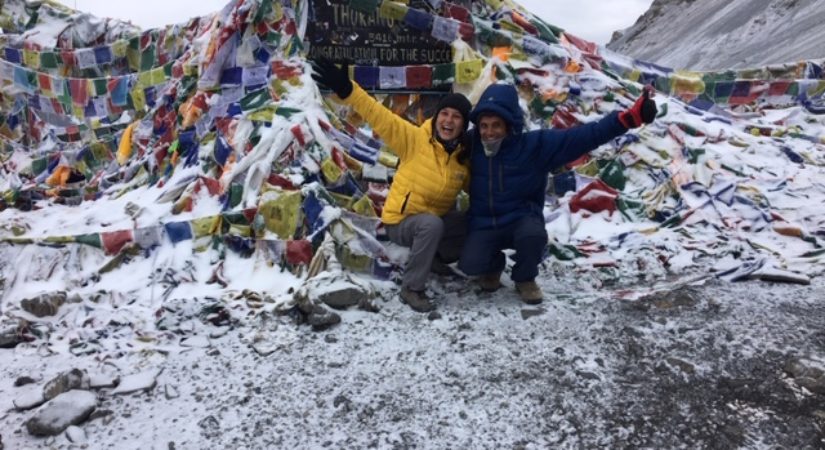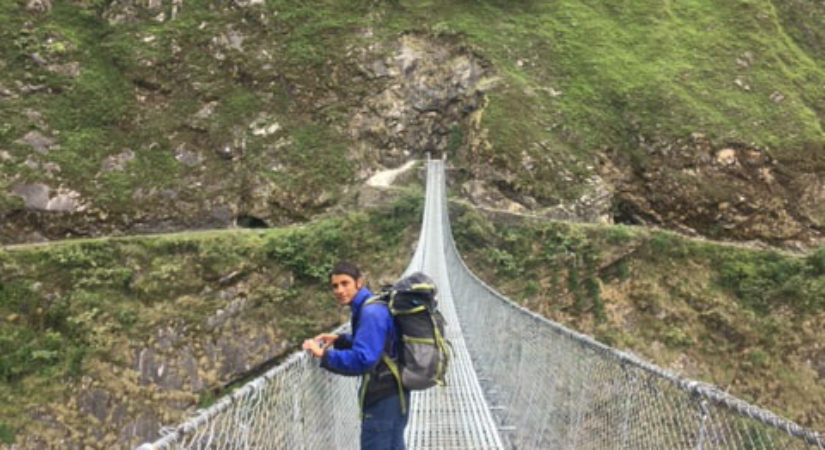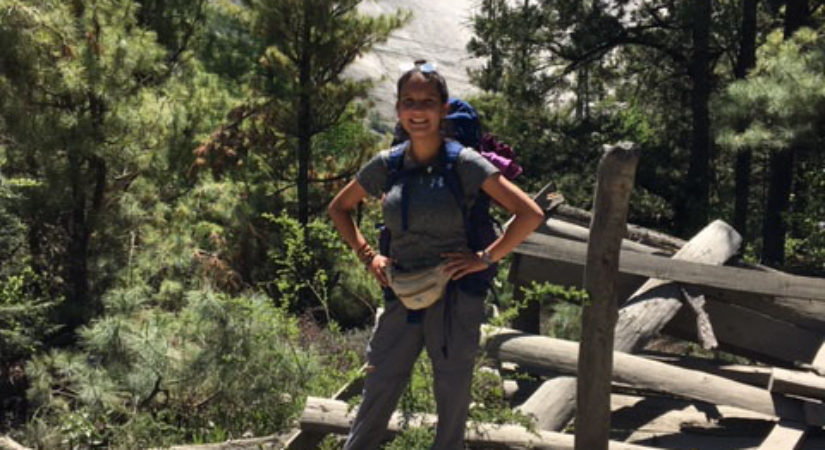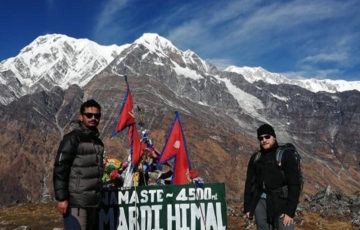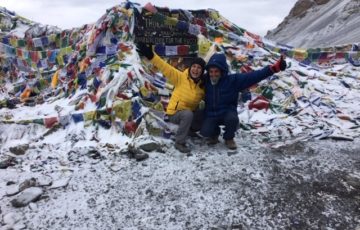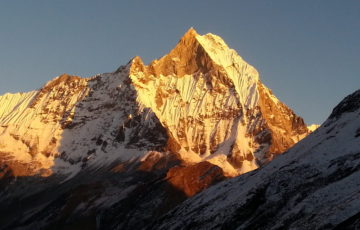Overview
Annapurna Circuit to Jomsom Trek 19 Days is one of the world’s greatest treks. However, The Nepal Trekking trail takes you into the nucleus of the Himalayan Mountains and winds between the hundreds of ice peaks of the Annapurna Andes. Annapurna Circuit is also a fantastic cultural experience as it visits villages with Nepali. And Tibetan influences and even take you to Muktinath in Jomsom, one of the most spiritually revered places for followers of both the Hindu and Buddhist religions. Annapurna Circuit to Jomsom Trek 19 Days has the entire accommodation framework required for one of the world’s greatest walking adventurous treks. Likewise, The trek terminates at Jomsom where a regular daily flight service will whisk you . over the southern parts of the Annapurna Sanctuary and deliver you back to Pokhara.
Annapurna Circuit to Jomsom Trek 19 Days is a famous trek along local trails, forests, and villages. And terraced farmland treats you to unparalleled mountain scenery, surrounded by enormous glaciers giving you an inside acquaintance into Nepalese life and culture. Nepal trekking to Annapurna base camp walk behind the Modi River and passes through dense stands of rhododendron and bamboo. There are a lot of quality accommodation options and tea houses to choose from your choice or trek in relative style and comfort. This is by far the best and most popular Itinerary for trekking the famous.
Trip Outline
Day 01: Arrival in Kathmandu (1,350 M)
Day 02: Kathmandu Sightseeing. (B)
Day 03: Drive from Kathmandu to Besisahar [Drive time ~8 hours. 700 M). Guesthouse (B/L/D)
Day 04: Trek Besisahar to Bahundada (About 6 hours trek time. 1,250 M). Trekking lodges (B/L/D)
Day 05: Trek Bahundada to Jagat (About 6 hours. 1,360 M) Trekking lodges (B/L/D)
Day 06: Trek Jagat to Dharapani (About 6 hours. 1,960 M) Trekking lodges (B/L/D)
Day 07: Trek Dharapani to Chame (About 5 hours. 2,710 M) Trekking lodges (B/L/D)
Day 08: Trek Chame to Pisang (About 5 hours. 3,300 M) Trekking lodges (B/L/D)
Day 09: Trek Pisang to Manang (About 6 hours. 3,440 M) Trekking lodges (B/L/D)
Day 10: Rest day in Manang. Trekking lodges (B/L/D)
Day 11: Trek Manang to Yak Kharka (About 4 hours. 4,110 M) Trekking lodges (B/L/D)
Day 12: Continue higher from Yak Kharka to Thorong Phedi (About 4 hours. 4,600 M) Trekking lodges (B/L/D)
Day 13: Trek Thorong Phedi to Muktinath – via the 5,416 m Thorong La Pass (About 8 hours. 3,800 M at Muktinath) Trekking lodges (B/L/D)
Day 14: Trek Muktinath to Kagbeni (About 3 hours. 2,800 M) Trekking lodges (B/L/D)
Day 15: Trek Kagbeni to Jomsom (About 3 hours. 2,710 M) Trekking lodges (B/L/D)
Day 16: Early morning flight from Jomsom to Pokhara. (B)
Day 17: Drive from Pokhara to Kathmandu. (Flight an optional extra.) (About 6-8 hours drive. 1,350 M) (B)
Day 18: Free day in Kathmandu for sightseeing and shopping. (B)
Day 19: International Departure. (B)
Detail itinerary
Breakfast Kathmandu Hotel
Duel to Well Come to Nepal at Tribhuwan International Airport (TIA) in Kathmandu, we will be greeted by a representative from Global Treks and Expedition who will reception and drop us off at our hotel. When you are ready you will be collected from your hotel lobby and driven to our Thamel office Global Treks and Expedition where you will be formally introduced to your Trekking Guide. We will go through your entire trek itinerary and arrangements with you to ensure every detail is in place. We will also ask for your passport photographs and any other details so that we can organize any permits required for your trek and the region you will be exploring.
Breakfast Kathmandu Hotel
After breakfast, we will conduct a guided tour and introduction to our rich culture and fascinating history. You will visit with our guide of these places Swayambhunath, Pashupatinath, Boudhanath and Durbar square.
Swayambhunath: Swayambhunath is Monkey temple which is approximately 2600 years old Buddhist Stupas, overlooking the entire Kathmandu valley. Swayambhunath- literally ‘self-existent god’, is often referred to as the Monkey Temple due to the thousands of monkeys- the local dwellers. The main Stupa, memorials of monks and local people, ancient sculptures, the temple of child protector goddess, monasteries, etc are the main attractions here. Moreover, you can throw bird-eye-view to all the monument sites of the Kathmandu tour since this is the highest point inside the valley.
Pashupatinath: Pashupatinath temple which is In We literally- the god of animal lives. As one of the must-visit legendary Hindu temple in the subcontinent, this site welcomes millions of visitors every year. The temple is located on the bank of sacred Bagmati River, which runs down to the Ganges. Here, you get a chance to witness open public crematorium with all the rites and rituals being performed. You come to see even the holy men posing for pictures with painted face, dreadlocked hair and ash-applied body
Boudhanath: Boudhanath stupa is a god of wisdom. It is considered as one of the largest Stupas in the world. Constructed back in the 4th century, this Stupa is the must-visit site for the Tibetans. The shrine itself resembles a Tibetan village since the locale comprises Tibetan monasteries and the exiles. Besides this, there are a number of painting schools with Lamas painting Thanka, the best souvenirs from Nepal.
Kathmandu Durbar Square: Kathmandu Durbar Square is Etymological, ‘Kumari’ stands for a virgin girl- the living goddess and ‘Baha’ is a monastery in the local tongue. Designed in Vihara architecture, Kumari Baha houses the living goddess. As a living reincarnation of Hindu goddess Taleju, a young girl is selected from a Buddhist family maintaining religious harmony and co-existence. The girl gets retired when she reaches puberty.
Drive time ~8 hours 700 M Breakfast, Dinner Besisahar Hotel
We will collect you from your hotel bright and early morning to start our journey. En route we see more of the countryside of Nepal that offers greenery, Trisuli rivers, villages, farms and beautiful mountain scenarios. Upon arrival at Mugling, we head along the road toward Pokhara. We leave the highway to Pokhara at Dumre and head north to Besisahar. A half-an-hour’s drive from Besisahar takes us to Khudi, the starting point of our trek. Alternatively, we can get off at Besisahar, and then trek for an hour to get to Khudi along the wide trail. Khudi offers us a first glimpse of the gorgeous Manaslu range.
About 6 hours trek time. 1,250 M Breakfast/Lunch/Dinner Guest House
Our first day`s walk involves crossing a few suspension bridges, waterfalls, several up and downhill sections across rice paddies and subtropical forest. Initially, the walk is gradual then it becomes steeper. The mountains that we see from Khudi become closer as we walk higher. The villages and people are interesting. On the way to Sirung, we come across an ethnic Tamang settlement, Tranche. We enjoy the close-up views of Nadi Chuli and Manaslu in Sirung. Sirung offers us a home-stay where we also enjoy the cultural program organized by the villagers for the visitors. If the number of visitors is more than four, the group may have to split to stay at different houses for the night. At this juncture, we will have the first glimpse of the gorgeous Manaslu range.
About 6 hours. 1,360 M Breakfast/Lunch/Dinner Guest House
We continue up the Marsyangdi River Valley as the valley walls get steeper and the rice terraces look even more impossible to construct and farm. We trek through amphitheatre-shaped rice terraces, along with a steep vertical cliff, lush forests, and some culturally intriguing villages. We pass more small villages and head higher up the valley and the challenge of the trail increases as it starts getting a little steeper. We gain altitude and reach Syange at 1,100 M altitude and continue up to Jagat at 1,300 M. The trail then gets a little steeper again as we end a fantastic day of valley walking at Chamie. From Jagat, we make a steep climb to Chamje. Overnight at Chamje.
About 6 hours. 1,960 M Breakfast/Lunch/Dinner Dharapani Hotel
The walk will test your sore muscles again as we head higher up the valley and gain more altitude. We pass many more farming communities that now subsist off their crops of corn, barley and potatoes and then through forests of bamboo and rhododendrons. On the way is the village namely Tal. Tallies on a flat plain next to the sandy beach and river at the base of a large waterfall. While hiking, sometimes we may have to give a pass to a large group of donkey caravan.Since we are now higher in the mountains these communities suffer the effects of a partial mountain rain shadow and are unable to farm rice like their lowland peers. The trek also takes us through forests of bamboo and beautiful rhododendrons that flower from February through to April. We reach the village of Tal, with its often flowing waterfall, and then continue on to Dharapani.
About 5 hours. 2,710 M Breakfast/Lunch/Dinner Guesthouse
Today we “turn the corner” and follow the valley as it turns toward the west. The trail becomes more challenging as we cross some steep and forested ridges and negotiate sites of old and more recent landslides that cut across the trail. The mountain scenery around us becomes more spectacular as we head higher up the valley. High above us on both sides are towering bare-rock mountains rimmed to icy summits. Now we get to see wonderful mountains such as the Lamjung Himal, Annapurna II and Annapurna IV (7,525m). This is also an active geothermal region and we can end the day with some relaxation time in the healing waters of one of the springs.
About 5 hours. 3,300 M Breakfast/Lunch/Dinner Guesthouse
Today is a fantastic day of challenging walking and spectacular mountain and valley scenery. We lace up the boots well today. The steep trail initially takes us through dense forests along the northern valley wall. When we reach Bratang we turn northward again and head through a very narrow section of a valley with huge cliffs and landslide scree slopes. This is a dramatic place to trek as you look down into the valley and then high up to the Annapurna massif peaks above. This is trekking in Nepal at its very best. Today we cross the river a number of times via high and dramatic suspension bridges. As we progress higher beyond the narrows we reach a wider section and the valley of Manang and its high snowy peaks towering above. A wonderful day of walking and exploring ends at the village of Lower Pisang.
About 6 hours. 3440 M Breakfast/Lunch/Dinner Guesthouse
The trail has many branches and options today, but they all take us higher up the valley under the towering peak of 7,555m Annapurna III to the south. We have now moved deeper into the Annapurna massif rain-shadow region and so the landscape progressively changes to more stunted vegetation and more bare-rock slopes. i.e., the route through Upper Pisang via Geru, we will have outstanding sceneries. We feel like we are horizontally in front of the majestic peaks. The panoramic views of the mountain peaks, such as Annapurna, Pisang peak, and several others will definitely allure us. We experience a contrast with the landscape and vegetation from today. On the way, the cold and dry climate creates a much harsher environment. Our short visit to Barge monastery, the largest in the entire district of Manang will be memorable. This is now the more harsh, cold and dry climate of the high plateau of Tibet. We will take a short break for some spiritual advancement at the Barge Monastery where we have a chance to glimpse the life of the Buddhist monks who live here throughout the year.
Breakfast/Lunch/Dinner Guesthouse
Today is the scheduled acclimatization day, lungs and muscles recover and give our boots a quick clean too. Each day we have been gaining altitude, but we must do this in carefully measured stages to ensure proper acclimatization for the higher altitudes and high passes ahead. So today we just do some short walks to explore the region around Manang. Bhojo Gompa or Gangapurna Lake is worth visiting sites from acclimatization point of view. Further, we pay an easy excursion to a little distance away to a village called Vraga, upon where we will be at a village’s monastery. Options include a visit to the Buddhist Bhojo Gompa. Most importantly today we must continue to acclimatize for the challenging days ahead.
About 4 hours. 4,110 M Breakfast/Lunch/Dinner Guesthouse
Today we gain over 6,00 M in altitude and by the time we reach Yak Kharka at 4,110 M we will have just 62% of sea level oxygen available with every breath. The trail heads north as we ascend a side valley out of the main Marshyangdi Valley we have been trekking since the trek commenced. From Manang village, the trail crosses a stream, climbs to a village of Tenki above Manang, and then continues to climb out of the Marshyangdi Valley turning northwest up the valley of Jarsang Khola. The trail follows this valley northward, passing a few pastures, a scrub of juniper trees, as it steadily gains elevation. The trail further passes near the small village of Ghunsa, a cluster of flat mud roofs just below the trailhead. Now the trail goes through meadows where horses and yaks graze. We pass through high meadows where sheep, cattle, yaks and even horses graze. We pass a number of small communities and often meet shepherds with flocks and finally reach the little village of Yak Kharka.
About 4 hours. 4,600 M Breakfast/Lunch/Dinner Guesthouse
We ascend another 500 m today and each breath gets a little harder and the oxygen a little less. We walk up increasingly steep trails as we head high up the valley. The walking becomes a little harder with each hour and so we must take our time, rest often and continue to properly manage our altitude acclimatization. We make our way to the foot of the pass, Throng Phedi today. Thorong Phedi is a small busy settlement catering to the needs of tired trekkers and climbers. Trekkers like us use this point as a base camp. Some visitors also attempt a hike to the High Camp today so that the next day can be easier for them. Thorong Phedi exists to support trekkers and expedition climbers. We must rest the remainder of the day here so we are ready for a tough day tomorrow as we face the challenges of the very high Thorong Las Pass.
About 8 hours. 3,800 M at Muktinath Breakfast/Lunch/Dinner Guesthouse
Today we face the greatest challenge of the trek as we attempt to cross the Thorong La Pass. Your guide will keep a careful eye on the weather conditions and the condition of every member of your trekking group. High altitude passes must be treated with respect. The Thorong La Pass will take us to 5416m or 17,764ft altitude where each breath brings in just 52% of the oxygen available at sea level. So your lungsm heart and legs will be working hard today and your brain will not be at its best. That is why it is always best to trek with an experienced guide who can function normally at high altitude and make the right decisions that reduce the risks for his or her trekking group members. It will be a long day so expect to start early. The trail will wind up the valley wall to the lowest crossing point possible in this part of the Himalaya ranges – the Thorong La Pass. But you can still expect plenty of ice and snow on the trail and at the top of the pass. So tread carefully and take your time. As you head higher the mountain views get even more spectacular as you start to view many of the peaks from their own level. But all going well you will have prepared properly and should have no trouble reaching the high pass and enjoying the achievement. But then it is time to start the descent and head down the path to the historic Hindu and Buddhist pilgrimage village of Muktinath.
About 3 hours. 2,800 M Breakfast/Lunch/Dinner Guesthouse
For many centuries Muktinath has been an important place of pilgrimage for Hindu and Buddhist followers. We will start the day by visiting the Vishnu Temple and Gompa and learning more about the cultural and religious significance of the rather remote village of Muktinath. We will then spend much of the rest of the day winding along descending trails from Ranipauwa to Kagbeni.
About 3 hours. 2,710 M Breakfast/Lunch/Dinner Guesthouse
Today is easy walking along the Kali Gandaki river bed as we descend gently to Jomson. The mountain scenery is spectacular even as we reach the end of the trek. We walk through the largest gorge in the world with 7,000 M and 8,000 M snow-capped peaks of Dhaulagiri and the Annapurna Massif towering above us to the west and east. We end the day and the trek at Jomsom, the main airport servicing the region.
Breakfast Pokhara Hotel
Your legs can finally rest as today we catch an early morning flight from Jomsom to Pokhara. In little more than half an hour you will fly over spectacular river valleys with the summits of Annapurna on one side and Mount Dhaulagiri on the other – so have your camera ready and grab a window seat. All too soon you will have left the Annapurna wilderness and be back in the noise and bustle or urban Pokhara.
About 6-8 hours drive. 1,300 M Breakfast Kathmandu Hotel
As an optional extra component of your trekking package, you may choose to take the 30-minute flight from Pokhara to Kathmandu. Or you may choose the road option and extend your experience of Nepal that little bit further. Either way, by this afternoon you will be back in busy, and often dusty, Kathmandu. In the afternoon time is your own to explore or perhaps go shopping. In the evening you will collect you from your hotel for a farewell dinner and cultural Nepali dance – so bring your comfortable dancing shoes!
Breakfast Kathmandu Hotel
This is the free day for a little more shopping and exploring.
Breakfast
We will meet you at your hotel and take you to the airport in plenty of time to meet your flight home.
What's included?
- Airport / Airport pick up & drop by private tourist vehicle.
- 4 N Kathmandu Hotel accommodation sharing bases with B/B( Bed & Breakfast)
- 1 N Hotel accommodation in Pokhara with B/B( Bed & Breakfast)
- Jomsom to Pokhara domestic flight.
- All your standard mentions Meals during the trek (B-Breakfasts, L-Lunches, D- Dinners).
- Lodges/Guesthouses accommodation during the 12 Days trek
- Local GLOBAL TREKS English speaking guide
- National Park permits and TIMS permit for trekking.
- Transportation from KTM- Besisahar & Pokhara- KTM entire this trek. ( Kathmandu)
- Food, accommodation, salary, insurance, and medicine for all staff.
- All our government taxes, vat, tourist service charges
- Official expenses.
What's not included?
- Lunch /Dinner whilst in Pokhara & Kathmandu.
- Travel insurance which covers emergency Rescue and Evacuation.
- Alcoholic, hot and cold drinks.
- Personal trekking Equipment (See the trekking equipment page).
- Tips for trekking staff and driver (Tipping is expected).
- Any others expenses which are not mentioned in ‘Price Includes’ section.
Essential Information
The following gives you a general idea of the personal items that you can bring for the trek. The personal items of your individual interest, and choice. In a supported trek, heavy items are carried by porters or yaks and personal belongings that you may need for the day like money, camera, sun cream, water bottle, rain gear, and toilet paper etc. should be carried by yourself. So you are briefed to pack items in two different bags. The most important fact that one should keep on mind is that one should have enough clothes to tackle the cold weather in the mountain range.
(Note: We will supply complimentary water and windproof duffel bag which you can use on the trek and is carried by porter/s. The duffel bag is yours to keep after the trek. You can leave your bag with your non-trek items at the hotel in Kathmandu and collect them after the trek)
Upper Body – Head / Ears / Eyes
Shade hat or baseball cap – of their head and then put a baseball cap on to hold it in place. This can be a flexible alternative while keeping the sun off your ears and neck.
Warm wool or synthetic hat that covers your ears.
Glacier glasses-100% UV protection with side shields and a hard-sided storage case (i.e. Julbo or Cebe). Regular sunglasses are not sufficient. If you wear prescription glasses, speak to your doctor about prescription glacier glasses, perhaps with transitional lenses. This is to protect your eyes from the rays of the sun due to the thinner atmosphere which can cause a painful condition known as snow blindness.
A neck warmer is another piece of gear for extra warmth if you feel you will need it.
Headlamp – Black Diamond and Petzl both make several good ones. Make sure to bring extra batteries and that they are lithium batteries so that they will last in the colder temperatures. These are indispensable for getting around at night, reading, etc.
Balaclava – lightweight, thinner variety
Some people like ear-muffs; these are optional; a good hat, balaclava, and hooded jacket should really be sufficient, but this is a personal choice for some people.
Hand
1 pair liner gloves, thin wool or synthetic, useful alone a days or as a layer of other gloves/mitts for additional warmth.
1 pair warm gloves (heavier fleece or wool).
1 pair shell gloves or mitts; Gore-Tex is preferred for keeping hands dry.
Instant hand warmers are always nice in a pinch, but really shouldn’t be necessary on the trek. Bringing appropriate hand protection as recommended above, should be sufficient (optional).
Core Body
T-shirts 2/3
Light and expedition weight thermal tops.
Fleece jacket or pullover.
Fleece Wind-Stopper jacket (optional).
Waterproof (preferably breathable fabric) shell jacket.
2 women sports bras, Synthetic, no cotton!
Lower Body – Legs
2 pairs nylon hiking shorts – Quick drying type, not cotton!
Underwear, stay away from cotton .(4/5)
1 pair soft shell pants – synthetic, full zip from top and bottom preferable.
2 pairs trekking pants, the knees so they double as shorts.
1 pair hard shell pants. Waterproof/breathable, Gore-Tex or equivalent is best. Should zip from the top and bottom – this makes it easier to put on over boots without getting undressed should the weather change once you are underway for the day.
1 pair cotton pants (loose jeans/khakis).
2 pairs lightweight long underwear – Capilene or other synthetic.
All clothing should be kept dry using waterproof stuff sacks or large puncture resistant plastic bags.
Feet
4/5 pairs of liner socks, synthetic or Capilene.
3/4 pairs heavyweight socks to be worn over liner socks.
1 pair lightweight socks, a good option for the lower / warmer parts of the treks.
1 pair light to medium weight waterproof hiking/trekking boots.
1 pair light trekking shoes or sneakers. Good for around the camp/lodges and in Kathmandu.
1 pair hiking gaiters, good for keeping dust and rocks out of your shoes/boots as well as keep your feet dry as necessary (Optional).
1 pair sandals (Optional).
Medicines and First Aid Kits
(Please note WT guide will also carry the first aid kit bag during the trek. However, we still recommend you to bring your personal first aid kit as well)
Extra Strength Excedrin for altitude-related headaches.
Bruprofen for general aches and pains.
Immodium or Pepto Bismol capsules for upset stomach or diarrhoea.
Diamox (commonly prescribed as Acetazolamide) 125 or 250mg tablets for altitude sickness. Please discuss with us before starting to take this medicine.
1 small personal sized first-aid kit with blister treatments such as moleskin, band-aids, some waterproof tape, anti-infection ointments, etc. your guides will have more extensive medical gear, but you should have the basics for general use.
Most Necessary Documents/Materials
Passport and extra passport photos (4 copies).
Airline ticket (Please make a copy and leave on at our office in KTM just in case if you need to change the date of your).
Durable wallet/pouch for travel documents, money & passport.
Lip balm. At least SPF 20, 2 sticks. A string taped to the stick is helpful, to hang around your neck and some are now being sold with a cord already attached. Handy as it avoids you from having to stop and look for it.
Sunscreen. SPF 40 is recommended and should be relatively new since it loses its’ effectiveness over time.
Pocket knife or small Swiss Army type.
Water purification Iodine tablets or Polar-pure crystals.
Toiletry kit. Be sure to include toilet paper stored in a plastic bag, hand wipes, and liquid hand sanitizer, towel, soap, etc.
2 bandanas.
Optional
1 pair adjustable trekking poles. Although these are listed as optional, these can be of great assistance to people who may think of themselves and generally clumsy or with bad knees, ankles, etc, especially when going downhill (Optional).
Binoculars (Optional).
Favorite snack foods, no more than 2 pounds (Optional).
Paperback books, cards, mp3 player (there are a couple of stops where you could recharge. Avoid players with moving hardware as it may not function. Remember, keep these items lightweight) (Optional).
Hydration bladder with a drinking tube and tube insulator (Optional).
A pee bottle for men and pee funnel for a woman, some swear by them to avoid that chilly late night trip (Optional).
1 small stainless steel thermos (Optional).
1 lightweight point & shoot camera or 1 large SLR. Digital cameras are ok, but you must keep the batteries warm when not in use (Optional).
Please Note: Tight fitting, figure-hugging clothing, such as those made with Lycra can often be offensive to locals, especially to women. If you find these items comfortable as a base layer, please pack something to wear on top of them.
Above This list is only a guideline. While you are required to bring everything on this list, there are numerous options, brands, and versions of each piece of equipment. Please Use your experience and the listed features to find the best gear for you. Some of the above equipment can be easily found in stores in Kathmandu for cheaper prices.
Price Starts
US $1375
$ 1475
Free Cancellation
Hassle-Free Booking
Best Price Guarantee

